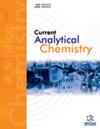HPLC Analysis of Vitamins C, E, Beta-carotene, and Some Flavonoids in Armenian Red Wines
IF 1.7
4区 化学
Q3 CHEMISTRY, ANALYTICAL
引用次数: 0
Abstract
Background: Oxidative damage to biological molecules is mainly caused by free radicals produced in the body. Natural antioxidants can prevent the resulting oxidative stress. For this purpose, particularly grapes and grape products, which contain vitamins and polyphenolic substances with high antioxidant activity, are used. Methods: In the present study, the content of vitamins C and E, beta-carotene, and some flavonoids ((+)-catechin, quercetin, and trans-resveratrol) in the composition of 19 brands of red wines that are produced in Armenia, was determined by HPLC. Vitamins C, E, beta-carotene, as well as flavonoids manufactured by Sigma-Aldrich were used as standards. Results: The amounts of vitamin E and beta-carotene were below the sensitivity threshold of the method, and the content of vitamins C and flavonoids varied over a wide range (vitamins C 2.15- 56.1, (+)-catechin 0-620.3; quercetin 0-10.55; trans-resveratrol 0-5.89 mg/L). Conclusion: The chromatographic analysis of vitamins and flavonoids allowed us to investigate not only the content of useful substances that make up red wines but also to identify counterfeit products. In this study, wines presented directly to retailers were analyzed since the task was both to determine vitamins and flavonoids and to identify counterfeits. The results of our study showed that among all the selected wine brands, there were no samples that, in terms of their properties, would not meet the required parameters.亚美尼亚红葡萄酒中维生素 C、E、β-胡萝卜素和某些类黄酮的 HPLC 分析
背景:生物分子的氧化损伤主要是由体内产生的自由基引起的。天然抗氧化剂可以防止由此产生的氧化压力。为此,人们特别使用葡萄和葡萄制品,因为它们含有维生素和多酚类物质,具有很高的抗氧化活性。研究方法在本研究中,采用高效液相色谱法测定了亚美尼亚生产的 19 种品牌红葡萄酒成分中维生素 C 和 E、β-胡萝卜素以及某些类黄酮((+)-儿茶素、槲皮素和反式白藜芦醇)的含量。以维生素 C、E、β-胡萝卜素以及 Sigma-Aldrich 公司生产的类黄酮为标准。结果维生素 E 和β-胡萝卜素的含量低于该方法的灵敏度阈值,维生素 C 和类黄酮的含量变化范围较大(维生素 C 2.15-56.1,(+)-儿茶素 0-620.3,槲皮素 0-10.55,反式白藜芦醇 0-5.89 mg/L)。结论通过对维生素和黄酮类化合物的色谱分析,我们不仅可以研究红葡萄酒中有用物质的含量,还可以识别假冒产品。在这项研究中,我们分析了直接卖给零售商的葡萄酒,因为我们的任务既是测定维生素和类黄酮,也是识别假冒产品。研究结果表明,在所有被选中的葡萄酒品牌中,没有任何样品的特性不符合所需的参数。
本文章由计算机程序翻译,如有差异,请以英文原文为准。
求助全文
约1分钟内获得全文
求助全文
来源期刊

Current Analytical Chemistry
化学-分析化学
CiteScore
4.10
自引率
0.00%
发文量
90
审稿时长
9 months
期刊介绍:
Current Analytical Chemistry publishes full-length/mini reviews and original research articles on the most recent advances in analytical chemistry. All aspects of the field are represented, including analytical methodology, techniques, and instrumentation in both fundamental and applied research topics of interest to the broad readership of the journal. Current Analytical Chemistry strives to serve as an authoritative source of information in analytical chemistry and in related applications such as biochemical analysis, pharmaceutical research, quantitative biological imaging, novel sensors, and nanotechnology.
 求助内容:
求助内容: 应助结果提醒方式:
应助结果提醒方式:


